Starting a new job should feel exciting, not confusing. This guide rounds up the latest employee onboarding statistics so you can see what works, what gets in the way, and where to focus your energy. We cover first-week impressions, the manager handoff, remote and hybrid challenges, and the kind of tech that actually helps people settle in. Use these numbers to audit your process, close the gaps, and build an onboarding plan the right way.
Oh, and there’s an employee onboarding checklist, too.
Guide to employee onboarding statistics
Key employee onboarding statistics for 2026
- Only 12% of employees say their company does a great job onboarding.
- First impressions form fast: 70% decide in the first month and 29% in week one. You have about 44 days to win them over.
- Small human touches work: a “Wow!” moment makes employees about 2× more likely to feel fully informed and engaged.
- HR knows it’s hard: 63% say onboarding, offboarding, and training are among their biggest challenges.
- Remote and hybrid are highest risk: 42% of fully remote and 39% of hybrid new hires report a truly terrible onboarding experience.
How common is great employee onboarding? Stats
Great onboarding is still rare. A while back, Gallup found that only 12% of employees strongly agree their company does a great job onboarding, and after the process ends only 29% say they feel fully prepared and supported to excel in the role. In other words, most people walk out of onboarding still unsure about what good looks like and how to succeed.
Employee surveys from Enboarder point to why. Only 26% of respondents said their most recent onboarding left them fully informed, engaged, and confident. Most programs also end far too quickly: 62% wrap within a week and 31% finish in a single day. That’s more like a short orientation than a real onboarding journey.
The takeaway is simple. If you extend onboarding beyond week one, start before Day 1 with basic access and welcomes, make role expectations crystal clear, and engineer real human connection (buddy, team intros, a small “wow” moment), you’ll already be ahead of most organizations. The payoff is meaningful, too: when employees rate their onboarding as exceptional, Gallup reports they’re nearly three times more likely to say they have the best possible job.
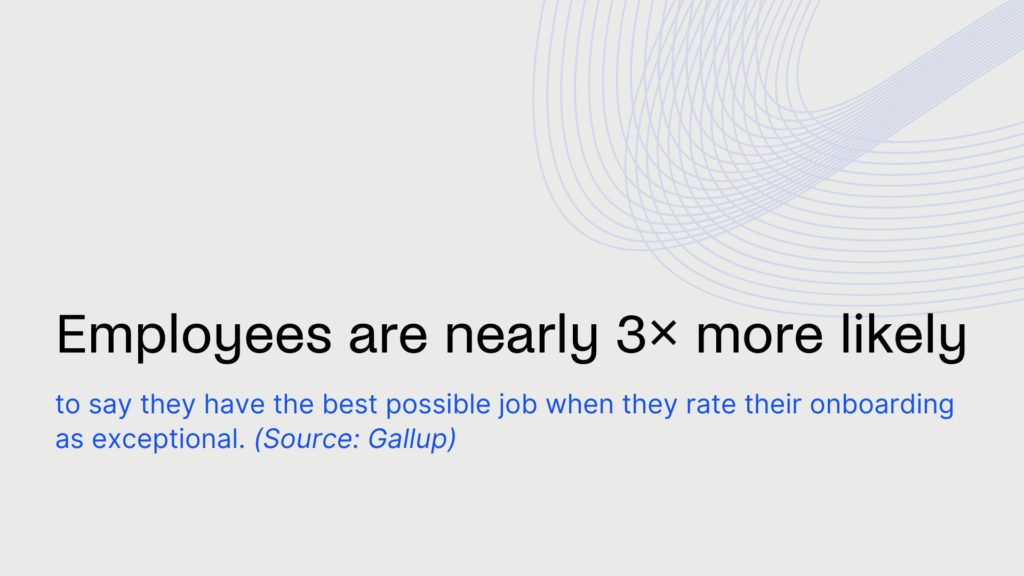
What great onboarding looks like
Most companies now start some form of onboarding before a person’s first day, which is good news. Enboarder reports that about 65% of new hires begin preboarding prior to Day 1. The problem is that the journey ends too quickly.
For 62% of employees, onboarding is over within a week, and for 31% it lasts only a single day. Another 7% say they had no real onboarding at all. The content also leans heavily toward paperwork and office policy rather than culture and human connection, which helps explain why many people leave the process feeling underwhelmed.
When you look at the people who were “over the moon” about their onboarding, a different pattern shows up. These employees were far more likely to have started early, with 80% beginning before Day 1. They also described consistent communications that left them feeling fully informed and engaged, which jumps to 93% in this happiest group. Culture was not just explained but shown, with 60% saying it was demonstrated very well. And the social side mattered a lot, with 62% reporting they felt fully supported and connected to colleagues. This is the mix that turns a basic orientation into a strong onboarding experience.
Small, personal “Wow!” moments amplify the impact. Two thirds of respondents said they experienced at least one Wow moment. Those who did were roughly twice as likely to feel fully informed and engaged, 70% more likely to say onboarding made them successful in the role, 74% more likely to feel they belonged, 82% more likely to say onboarding made them happy, and more than twice as likely to say onboarding boosted their productivity. These are inexpensive gestures that create outsized momentum.
Friendship is a quiet superpower in this process. Seventy-three percent of employees made at least one friend during onboarding. Making friends was linked to four times higher odds of an “over the moon” rating and roughly twice the odds of a positive overall experience. Enboarder’s write-ups reinforce the same story: connection drives better feelings about clarity, culture, and even basic admin getting done. For remote and field workers, making friends is harder, so teams need to build in extra introductions and touchpoints to level the playing field.
Remote & hybrid onboarding needs extra attention
Remote and hybrid onboarding really does need extra care. Enboarder’s data shows fully remote new hires are the most likely to report a “truly terrible” onboarding experience at 42%, with hybrid data close behind at 39%. Remote hires are also nearly 50% more likely to say company culture was demonstrated poorly or not at all, and they are almost twice as likely to say the onboarding app was not helpful. All of that points to a single issue. Distributed newcomers are missing the human cues and lightweight help that in-office hires get by default.
Flexibility still matters for retention, which means you should keep remote and hybrid options while improving how you welcome people. SHRM reports that 79% of fully remote workers and 73% of hybrid workers say their work arrangement is a primary reason they stay with their employer. The work model is sticky, but the early experience needs to feel intentional or you lose the benefits.
The takeaway is straightforward. Keep the flexibility, then fix the onboarding experience:
- Give remote and hybrid hires more live face time through frequent video touchpoints and optional in-person meetups when possible.
- Pair every newcomer with a buddy who is accountable for weekly check-ins.
- Make culture visible in concrete ways, such as decision-making walkthroughs, team rituals they can join in week one, and screen-share shadowing of real work.
- Close the tool gap with software that actually connects people to information, peers, and their manager, not just to forms.
These moves directly address the gaps Enboarder flags for remote and hybrid hires, so the first weeks feel clear, personal, and supportive rather than confusing or lonely.
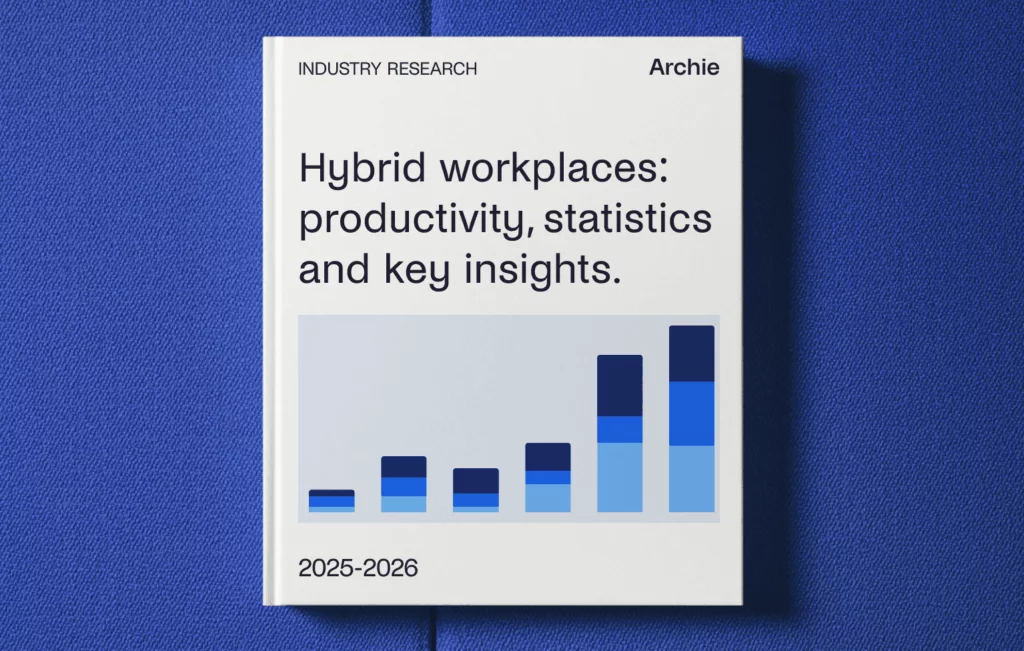
Tech helps (if it’s good)
Most companies are already using onboarding software, but a lot of it still misses the mark. About 74% of new hires say their employer used some kind of onboarding platform. Depending on how you cut the data, only 19–26% found that software “very helpful,” which tells you that simply having a tool is not the same as delivering a great experience.
The quality matters. When the workplace tech feels genuinely helpful, 95% of employees report a positive overall onboarding experience. When the tech is clunky, dissatisfaction jumps, with 36% describing a negative experience and another 13% saying they felt disappointed, sad, or even angry.
The features that move the needle are the ones that reduce friction and build connection. Employees say the most helpful capabilities are easy access to the information they need (45%), simple ways to connect with colleagues and peers (41%), and a clear channel to their manager (38%). Runners-up include email notifications (around 35–36%), short videos and multimedia (35%), automated paperwork (26%), mentor matching (25%), quick feedback and check-in surveys (24%), and gentle text nudges (21%). In short, the winning stack helps people find answers fast and meet the humans who will help them succeed.
HR leaders are aligned on where the tech should go next. Nearly half say onboarding a single hire currently eats at least a full week of admin time for HR, which is a big drain on already stretched teams. Their top requests for improvement are smarter AI features (52.7%) and better automation (46.8%). No surprise then that 82.5% are considering upgrading their onboarding tech in the next 12 months. Looking out over the next 3–5 years, leaders expect AI to focus first on automating the admin load (61.9%) and then on personalizing the experience for each new hire (61.3%).
Bottom line: good software amplifies what great onboarding already does well. If your platform quickly connects people to information, teammates, and managers, and it removes busywork for HR and new hires, satisfaction and employee productivity follow. If it adds friction, it backfires. The data makes the case to invest in tools that power clarity, connection, and timely nudges, not just forms and checklists.
Bottom line: good software amplifies what great onboarding already does well. For example, tools like Archie can make the first weeks smoother by auto-booking a Day 1 desk near the manager or buddy, reserving rooms for training and team huddles, and sharing office maps and seating neighborhoods. That kind of physical setup makes it easier to meet people and get meaningful work done.
Invest in systems that power clarity, connection, and timely nudges, not just forms and checklists.
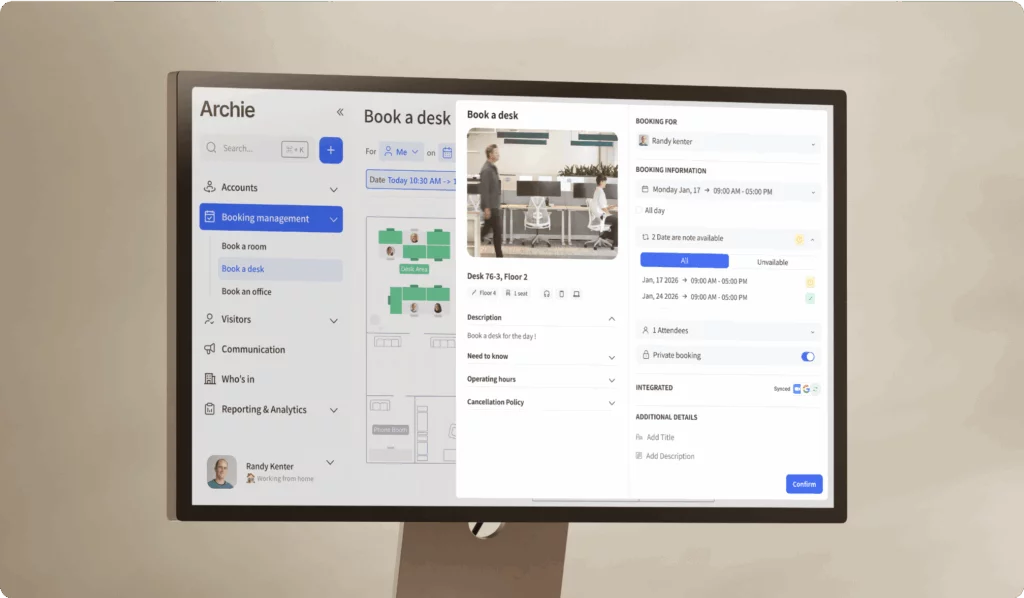
The manager handoff is still messy
The manager handoff is still a trouble spot. In Enboarder’s 2025 HR Leader Survey, only 36% of HR leaders say the transition from recruiting and HR to the hiring manager is seamless. Almost half, 49.4%, describe it as only adequate, which means there are gaps that new hires can feel right away. On top of that, 28.8% of leaders have seen a hiring manager provide no guidance or training at all to a newcomer. Nearly half of organizations, 44.8%, offer only loose 30-60-90 guidance and leave execution up to each manager. Put together, this paints a picture of uneven ownership and a lot of avoidable friction in the first weeks on the job.
The skills picture makes this harder. Recent reporting on Gallup’s global data suggests only about 44% of managers have received any formal management training, while other estimates put the untrained share even higher. That matters because Gallup also finds that the manager accounts for a big slice of team engagement, so gaps in manager readiness show up quickly in how new hires feel and perform.
The implication is simple: Standardize the manager playbook and then coach managers to run it well. Give every new hire a clear, role-specific 30-60-90 plan, define who does what in the handoff before Day 1, and build a short manager checklist that covers expectation setting, first deliverables, and weekly 1:1s in weeks 1 through 6. These basic moves close the ownership gaps that Enboarder highlights and make the first month feel organized and supportive instead of confusing or hit-or-miss.
Retention & cost: the stakes are real
Retention and cost are not abstract. They show up quickly when onboarding falls short. Work Institute reports that employees who have a great first 90 days are about 10× more likely to stay for the long term than those who have a poor early experience. That single window shapes the rest of the relationship, which is why early clarity, coaching, and connection matter so much.
Employee outcomes reflect this. Enboarder’s 2024 survey found that when onboarding goes badly, 1 in 3 new hires start looking for another job right away, and 25% actually leave. The same release shows only 26% of employees felt fully informed, engaged, and confident during onboarding, which helps explain why early exits happen.
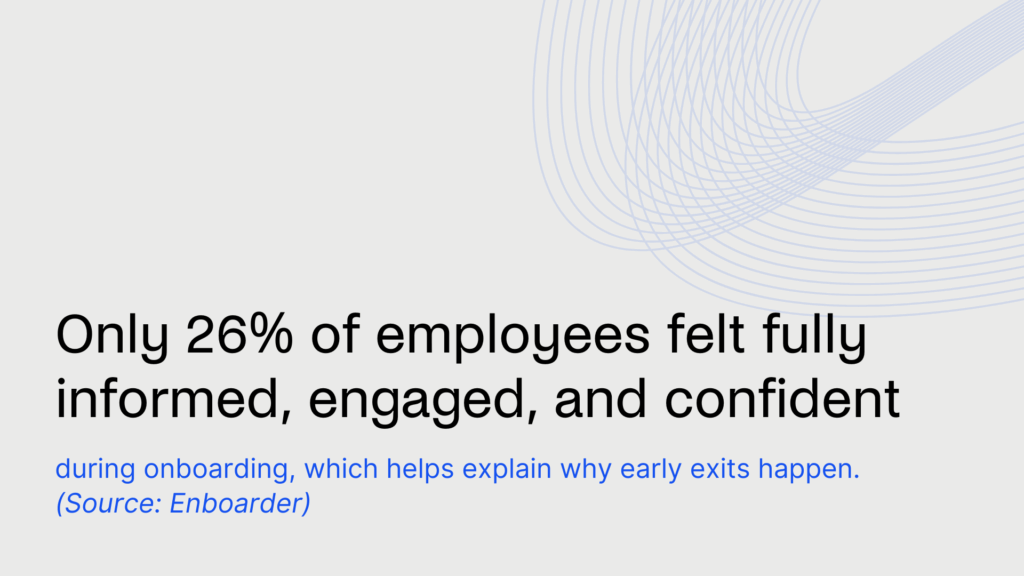
Leaders are seeing the same pressure from their side in 2025. In Enboarder’s HR Leader Survey, 20.5% say up to half of their new hires leave within 90 days, and 60.8% say this early attrition has increased in the past year. When asked why people bail early, leaders point to a misalignment between expectations and reality (30.3%), a lack of connection to team or culture (19.5%), and a poor onboarding experience (17.4%). These are all fixable with better expectation setting, stronger manager involvement, and a more connected first month.
The operational costs are real too. BambooHR’s July 2025 Hiring Edition reports that 44% of HR managers saw new hires quit within the first month in the past year. 37% experienced offer no-shows, and 86% of those teams say no-shows burned recruiting resources. Early churn forces HR to re-run the entire hiring process, pulls managers away from their teams, and delays productivity for everyone involved. Put simply, the first 30 to 90 days decide retention and drive cost.
HR’s reality check
Onboarding is a heavy lift for most teams. In BambooHR’s State of HR 2024 report, about 63% of HR pros say onboarding, offboarding, and training are among their most common challenges. About 18% even rank them as the most difficult tasks they handle. The report also shows that onboarding and training and development are next on the list of common and difficult challenges, at 32% and 31% respectively. In short, the work of getting people up to speed is where many teams feel the most pressure.
The friction shows up in very practical ways. Around 30% of HR teams say they feel overwhelmed by stacks of new-hire paperwork, and 29% say manual onboarding creates tedious tasks that frustrate new employees. Another 35% struggle to design an onboarding experience that helps people feel engaged and settled in quickly, while 17% say poor first impressions with candidates and new hires are damaging their employer brand.
To ease this pressure and reduce repetitive admin work, many HR teams are turning to automated tools like contract generators and employee onboarding software. Contract generators make it easy to create consistent, compliant employee contracts and have all the paperwork ready before day one. Onboarding platforms can then automate the rest of the journey, from sending documents for e-signature to scheduling training and check-ins. Together, these tools speed up the process, improve accuracy and compliance, and give new hires a much smoother, more professional start.
Still, leaders also worry about the broader employee experience that surrounds onboarding. 34% are concerned about employee engagement, 30% say a poor employee experience is already driving low retention, 27% do not have a way to measure employee experience, 27% worry about how hybrid or remote work affects performance and connection, and 23% are concerned their culture does not stand out. Since the first weeks strongly shape how employees feel about the company, these concerns connect directly to the quality of onboarding.
The takeaway is simple. Formalize your onboarding strategy, automate the admin, and give HR and managers more time for the human parts that actually change outcomes. That means a clear plan for expectations and early wins, easy access to tools and information, regular manager and buddy touchpoints, and basic measurement so you can see what is working and what is not.
What to do next
Here is how to turn the research into action:
- Start by nailing the first 44 days. Most people decide fast whether a job is a fit, with 70% deciding in the first month and 29% in the first week. Across companies, that gives you about 44 days to win long-term commitment. Treat that window like a launch period: line up manager 1:1s, a buddy introduction, early wins, and clear role expectations before day one, then keep the cadence through weeks one to six.
- Engineer connection on purpose. Enboarder’s 2024 data links small “wow” moments and early friendships to measurable lifts in belonging, happiness, productivity, and overall satisfaction. Build that into the plan with a named buddy, scheduled social touchpoints, quick introductions across teams, and at least one personal welcome that shows the culture in action.
- Fix the manager handoff so nothing falls between the cracks. Enboarder’s 2025 HR Leader Survey shows leaders do not view this transition as seamless, which means new hires feel gaps right away. Ship a simple 30-60-90 template, teach expectation setting, and track adoption so every manager runs the same play and every new hire gets the same baseline of clarity and support.
- Upgrade tech with intent. Tools help only when they connect people to the information they need, make it easy to meet colleagues and managers, and remove busywork for HR and new hires. Enboarder’s 2024 report ties “very helpful” software to much higher positive experiences, while clunky tools correlate with frustration. Choose platforms that enable timely nudges, easy access to resources, and lightweight feedback loops, not just digitized forms.
- Design for remote and hybrid from the start. Remote and hybrid new hires report the poorest onboarding experiences, which means they need extra guided touchpoints, visible culture moments, and deliberate networking to match the social cues in-office hires get by default. Add more live video check-ins, structured intros, office hours, and clear “how we work” examples so distributed people feel included and informed.
Here’s a simple, practical checklist you can run with today:
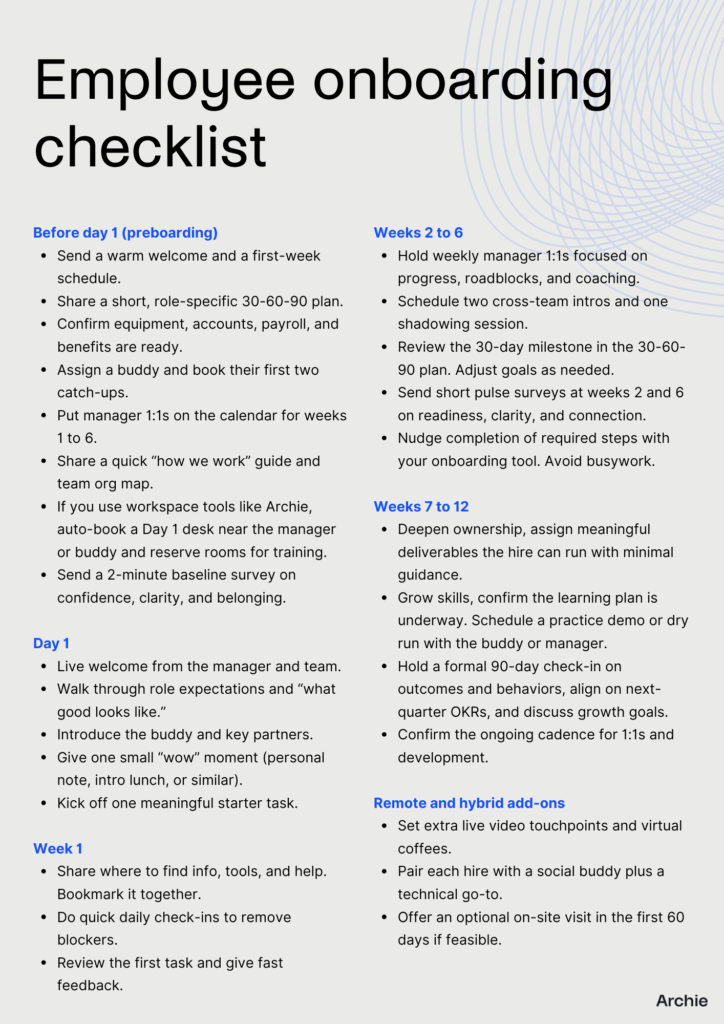
A summary of the most recent employee onboarding statistics
🗒️ How good onboarding is today
- Only 12% of employees say their company does a great job onboarding. (Gallup)
- After onboarding, just 29% feel fully prepared and supported. (Gallup)
- In recent starts, 10% felt “over the moon,” 65% happy, 19% meh, 6% negative. (Enboarder)
📝 Onboarding program setup and experience
- 65% start before Day 1, but 62% say onboarding ends within a week; 31% in a single day; 7% had none. (Enboarder)
- Activity mix skews to compliance: paperwork 59%, policies 57%; culture 47%, connection 46%, buddy 20%, mentor 20%. (Enboarder)
- Only 26% felt very informed, engaged and confident during onboarding. (Enboarder)
👋 Manager’s role and handoff
- Only 36% of HR leaders say the recruiting → HR → manager handoff is seamless; 49.4% call it “adequate.” (Enboarder)
- 28.8% have seen a manager give no guidance or training to a new hire. (Enboarder)
- 44.8% of orgs provide only general 30-60-90 guidance. (Enboarder)
- “Clear role expectations” got >2× the top votes of any other success factor. (Enboarder)
- Managers drive ~70% of team engagement variance. (Gallup)
🎲 Early turnover and reasons
- 20.5% of HR leaders say up to half of new hires leave within 90 days; 60.8% say this early turnover increased. (Enboarder)
- Top 90-day quit reasons: 30.3% expectations vs reality, 19.5% lack of connection/culture, 17.4% poor onboarding. (Enboarder)
- 44% saw first-month quits; 37% saw offer no-shows; 86% say no-shows waste recruiting resources. (BambooHR Hiring Edition)
- In a global survey, 1 in 3 with sub-par onboarding started job hunting; 25% actually left. (Enboarder)
- 86% of new hires decide how long they’ll stay within six months. (Enboarder)
💰 HR capacity, costs and pain points
- 63% say onboarding/offboarding/training are common obstacles; 18% say they’re the most difficult. (BambooHR State of HR)
- 35% struggle to create onboarding that engages and acclimates quickly. (BambooHR State of HR)
- 30% overwhelmed by new-hire paperwork; 29% say manual steps frustrate new hires; 17% say bad first impressions hurt employer brand. (BambooHR State of HR)
- 34% worry about disengagement; 30% say poor employee experience is driving low retention; 27% can’t measure EX. (BambooHR State of HR)
- Failed hire cost: many HR managers/directors estimate ≤ $25k; many CHRO/CPOs say ~$50k. (Enboarder)
💻 Remote and hybrid
- 42% of fully remote and 39% of hybrid new hires report a “truly terrible” onboarding. (Enboarder)
- Flexibility retains people: 79% of remote and 73% of hybrid workers say the arrangement is a key reason they stay. (SHRM)
🖥️ Tech and AI
- 74% used onboarding software, but only ~19–26% found it very helpful. (Enboarder)
- With very helpful software, 95% report a positive experience; bad tech correlates with higher dissatisfaction. (Enboarder)
- Helpful software boosts outcomes: compliance “done well” 74% → 94%; culture “very well” 28% → 67%; “completely supported” ~29% → 68%. (Enboarder)
- 46.4% say onboarding admin takes at least a week of HR time per hire. (Enboarder)
- Wish list: AI features 52.7%, better automation 46.8%; 82.5% plan to upgrade onboarding tech; ~80% already rely on AI moderately or highly. (Enboarder)
- Next 3–5 years, AI’s top roles: 61.9% admin automation, 61.3% personalized onboarding. (Enboarder)
Sources
- BambooHR, State of HR: 2024 Report
- BambooHR, Workforce Insights: Hiring Edition, July 2025
- BambooHR, Workforce Insights: Monthly Report, September 2025
- Enboarder, 2024 State of Employee Onboarding Report
- Enboarder, 2025 HR Leader Survey: Winning the First 90 Days
- Gallup, State of the Global Workplace: 2024 (Key Insights)
- SHRM, Insight-Backed Flexibility: Why Return-to-Office Mandates Falter
- Work Institute, Onboarding Accelerates Retention

Berenika Teter
Archie's Content Manager, fueled by filter coffee and a love for remote work. When she’s not writing about coworking spaces and hybrid workplaces, you can probably find her exploring one.
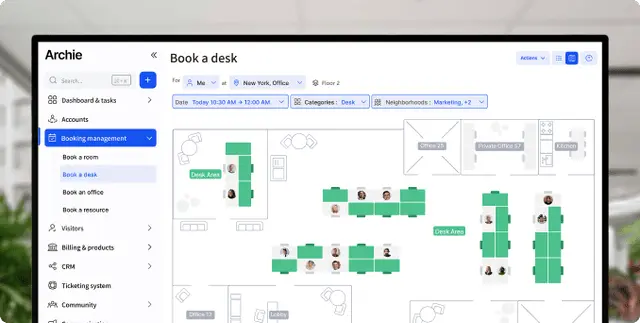
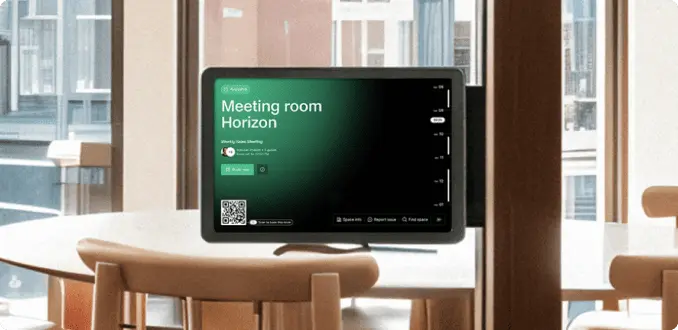

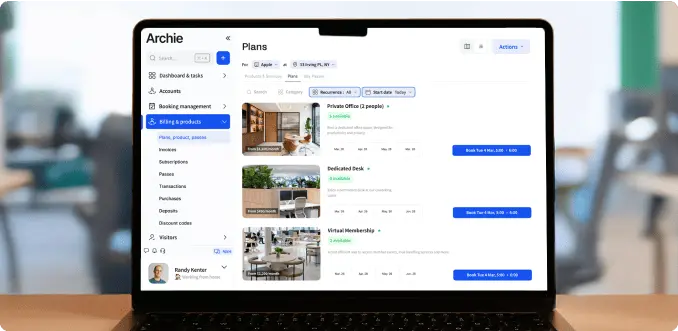
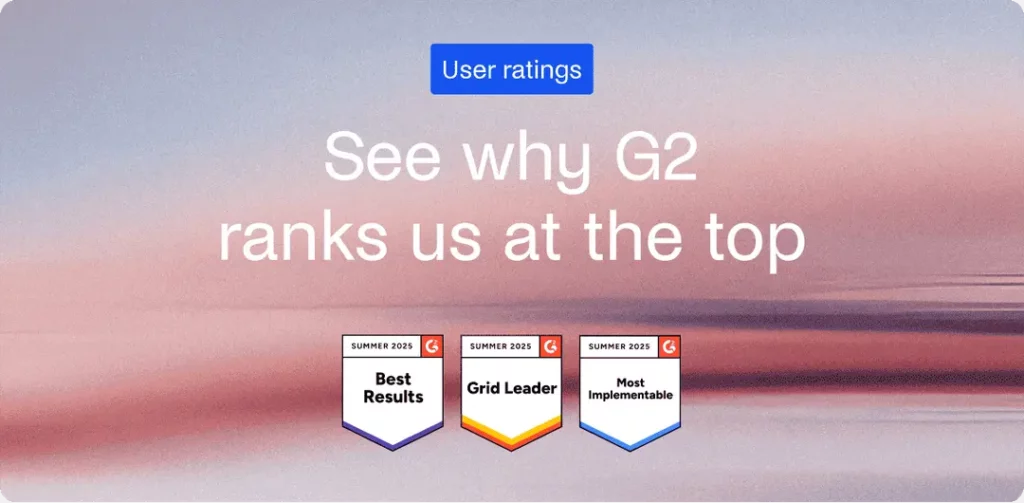
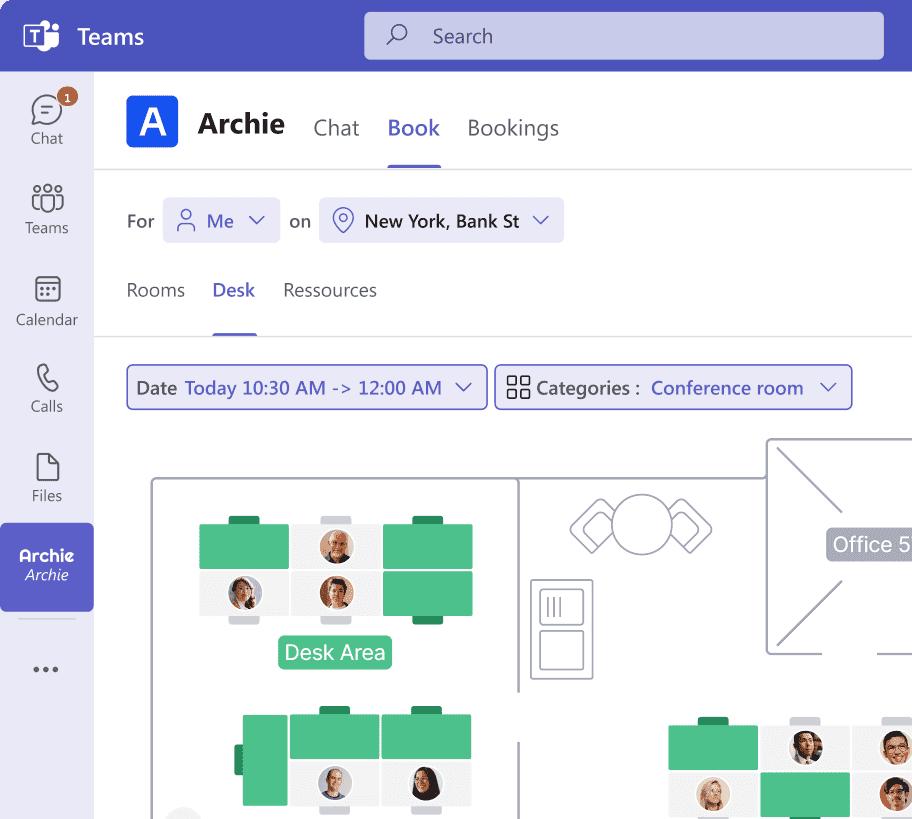
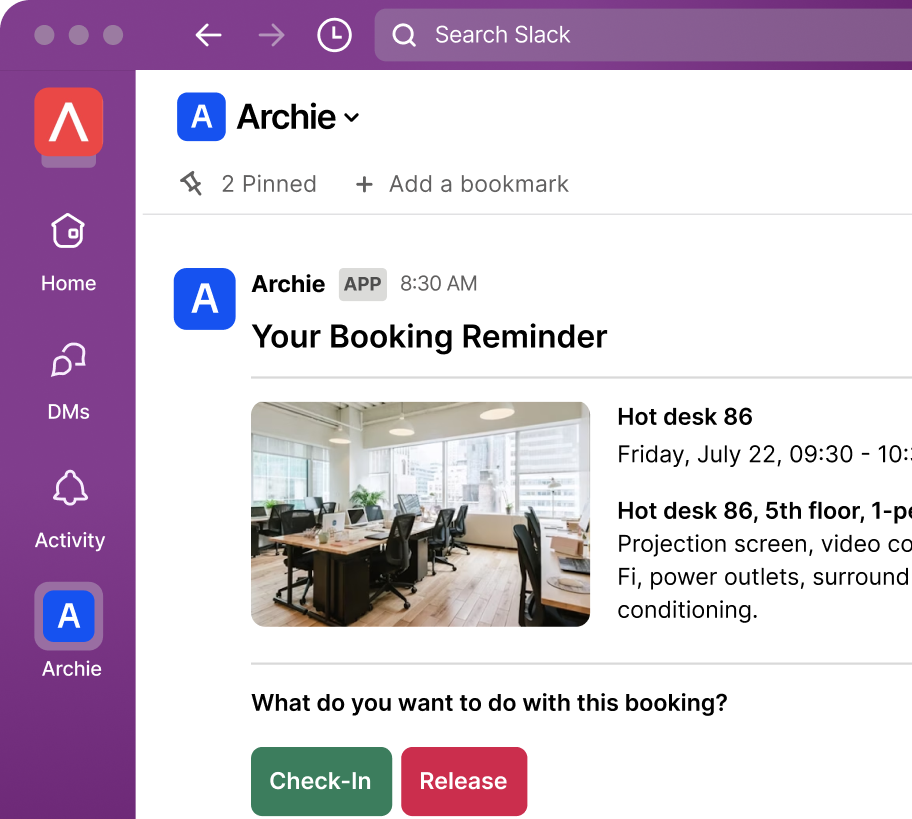
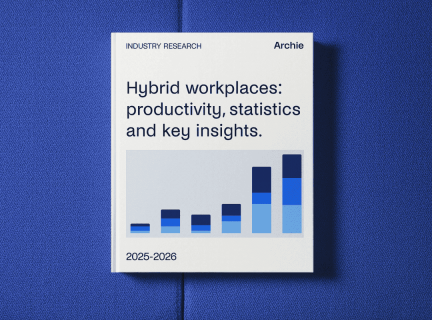
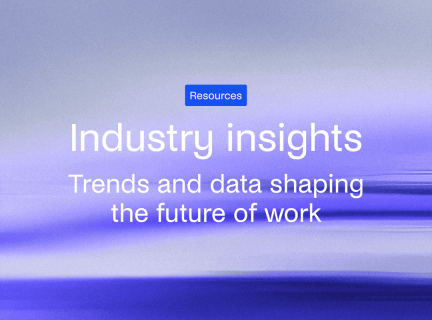
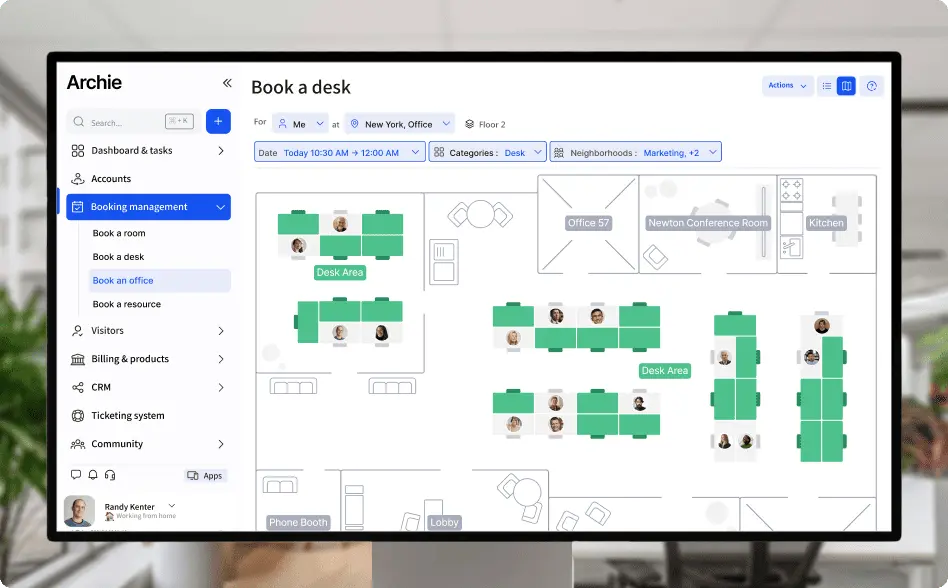
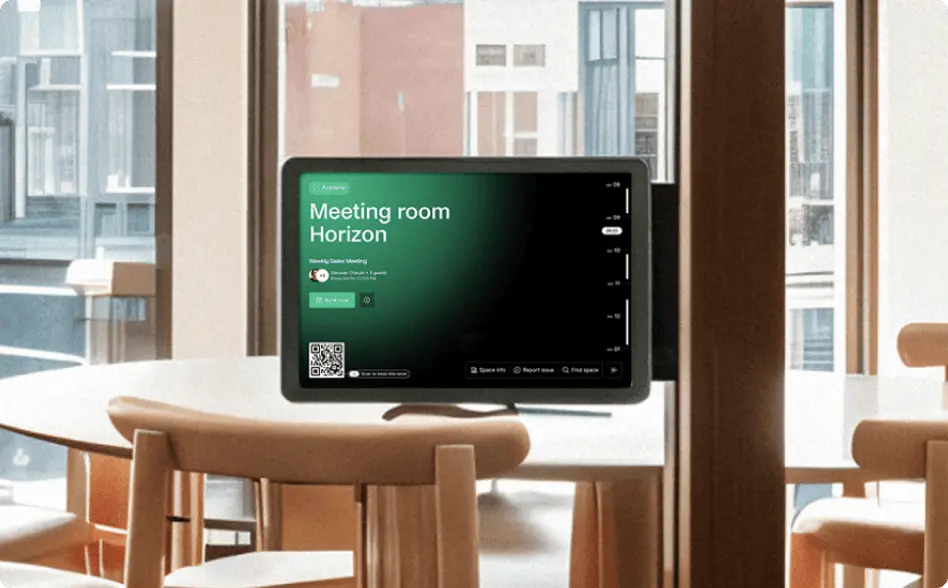
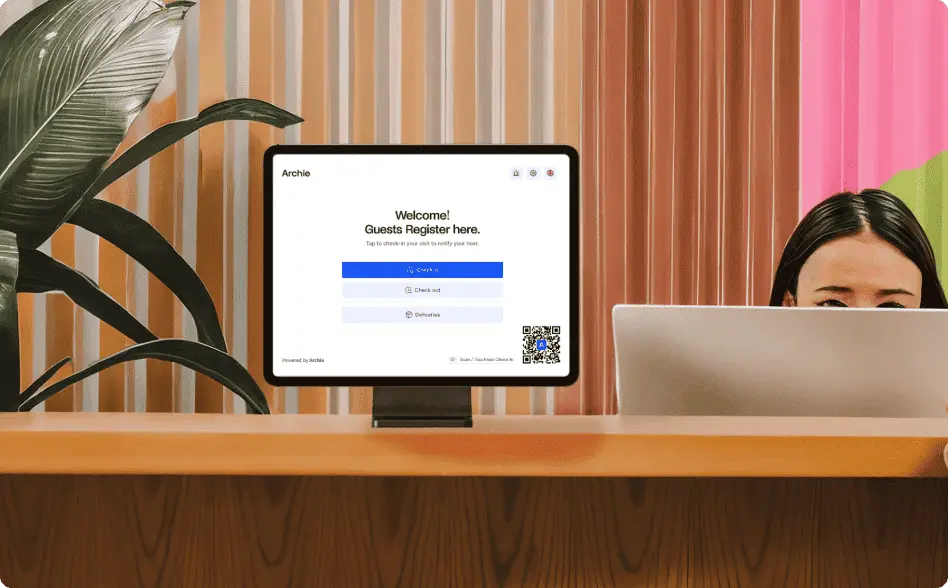
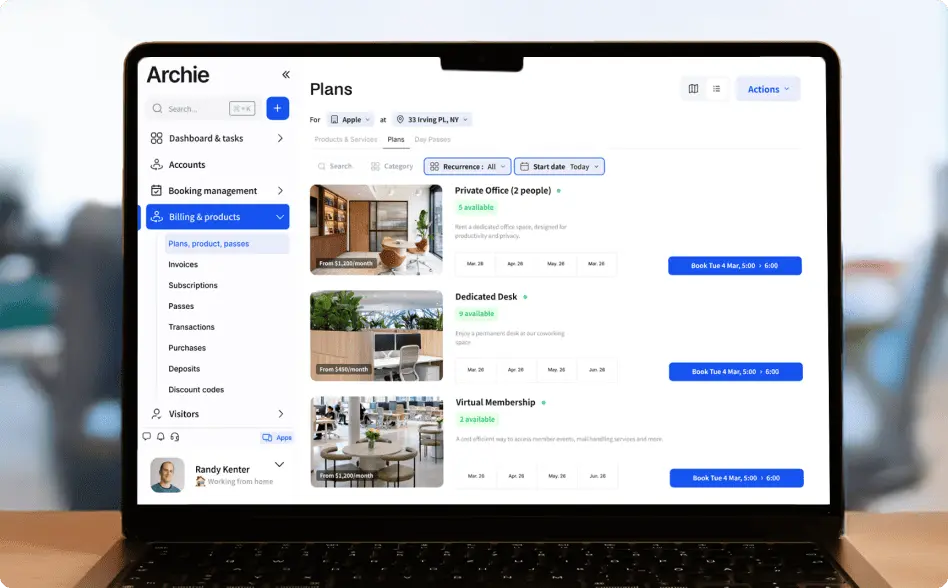

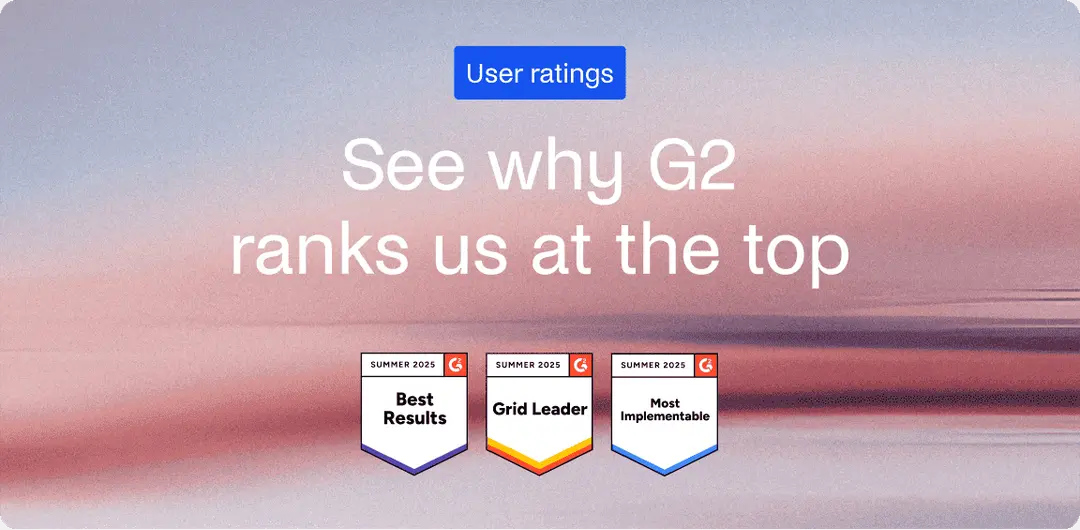
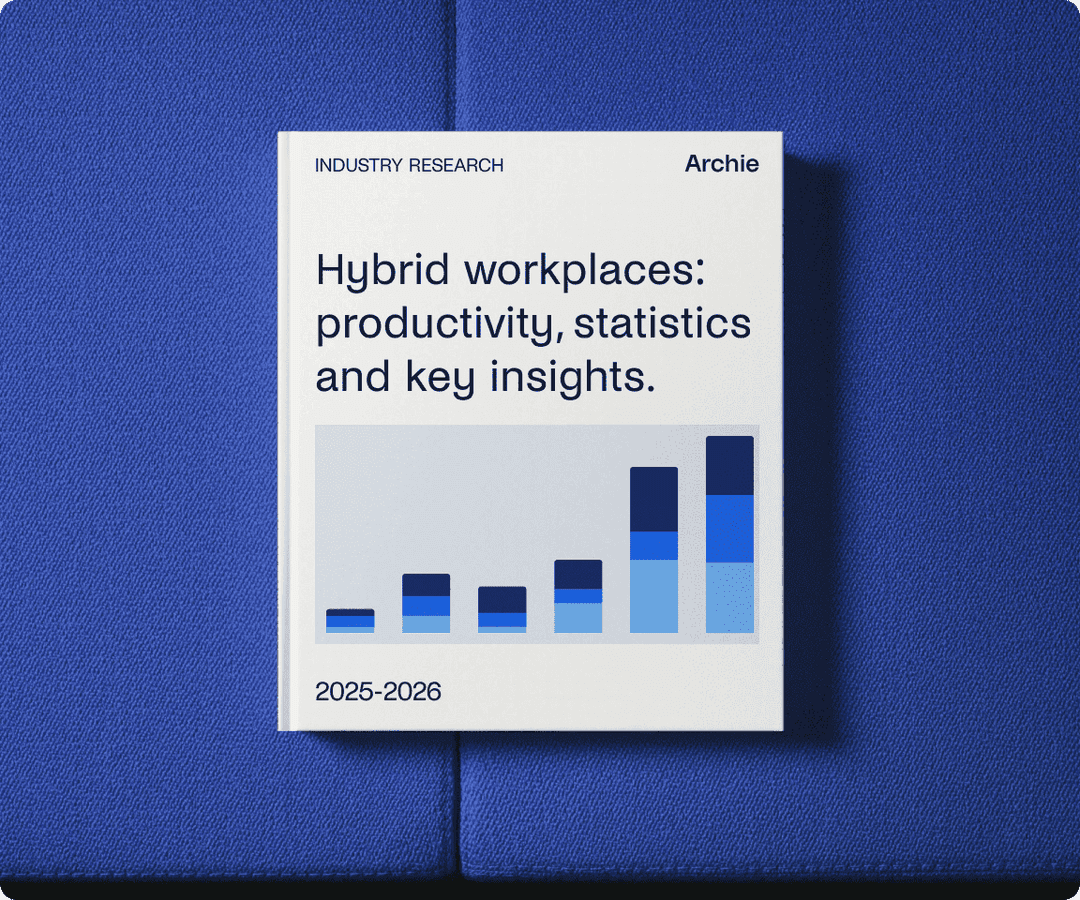
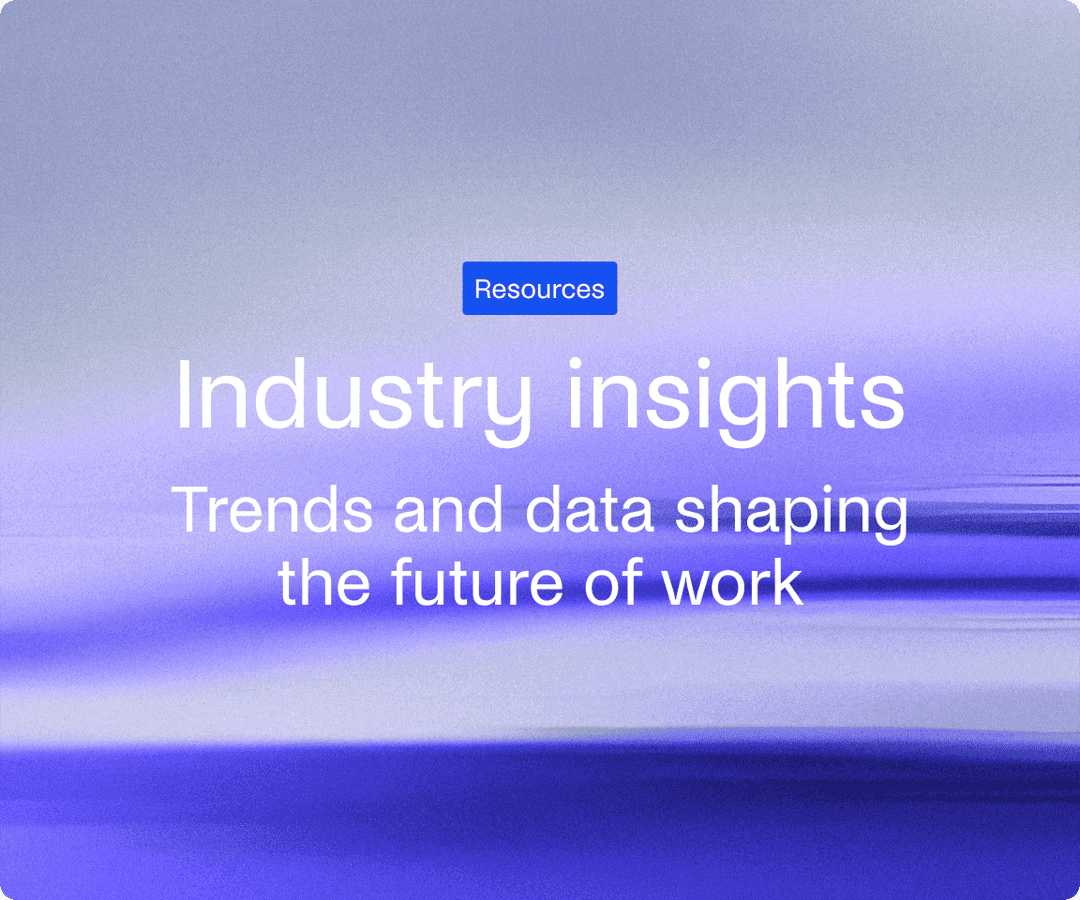

![The Latest Coworking Statistics & Industry Trends [2026] A cozy coworking space with wooden walls, warm lighting, and a large map of South America.](https://archieapp.co/blog/wp-content/uploads/2025/08/Latest-coworking-statistics-cover-image-400x400.jpg)
![RTO: Return-To-Office Statistics, Research & Trends [2026] Modern meeting room with large windows, a wooden conference table, pink chairs, and industrial-style ceiling lighting.](https://archieapp.co/blog/wp-content/uploads/2025/04/RTO-statistics-cover-image-400x400.png)

